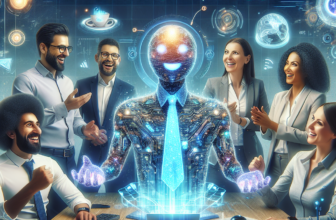Tailoring Employee Perks: Crafting Benefits for Every Generation in the Workplace
Introduction
In today's diverse workplace, employers face the challenge of catering to a multi-generational workforce. Adapting employee perks—also known as benefits—is paramount for fostering engagement, improving job satisfaction, and achieving a competitive edge in talent acquisition.
In this article, we will explore the significance of creating tailored benefits for each generation in the workplace.
Section 1: Understanding Generational Differences
The Silent Generation
Born between 1928 and 1945, this group values stability and job security. They prefer benefits that are traditional, such as retirement savings plans and healthcare coverage. Companies aiming to attract or retain Silent Generation employees should emphasize loyalty programs and pension contributions.
Baby Boomers
This generation, born between 1946 and 1964, is known for their strong work ethic. They appreciate benefits that contribute to their retirement planning, including 401(k) matching contributions and healthcare benefits. Tailoring perks for Boomers could involve offering phased retirement options.
Generation X
Generation X, born between 1965 and 1980, seeks work-life balance and flexibility in their benefit’s package. They appreciate options such as telecommuting and flexible schedules. Companies may enhance employee satisfaction by including these elements in their tailored perks strategy.
Millennials
Millennials, born between 1981 and 1996, prioritize experiences over material possessions. They favor benefits that promote personal growth, such as tuition reimbursement and professional development programs. Additionally, benefits like wellness programs resonate well with this group.
Generation Z
The newest generation in the workforce, Generation Z, values technology-driven solutions and social responsibility. They appreciate unique benefits like mental health days and volunteer time-off. Customizing perks for this generation can help organizations attract this talent pool effectively.
Section 2: The Importance of Tailoring Benefits
Enhanced Employee Engagement
Tailoring employee perks enables organizations to enhance engagement. Employees are more likely to feel valued when their benefits align with their individual needs and preferences. A personalized approach fosters a sense of belonging and community within the workplace.
Increased Retention Rates
Providing tailored benefits can significantly increase retention rates. Employees who feel their unique needs are being addressed are less likely to seek opportunities elsewhere. This stability enhances company culture and reduces turnover costs.
Section 3: Crafting a Personalized Benefits Package
Flexible Work Arrangements
Flexible work arrangements, such as remote work options and flexible hours, are becoming highly desirable perks for all generations. These options not only improve work-life balance but also increase productivity and job satisfaction.
Wellness Programs
Comprehensive wellness programs that include mental health support, fitness memberships, and health screenings are valued across generations. These programs demonstrate an organization's commitment to employee well-being and can lead to reduced health care costs over time.
Section 4: Technology and Employee Benefits
Using HR Tech for Customization
HR technology can play a significant role in tailoring employee benefits. Platforms that allow employees to select their perks based on their preferences enable a personalized experience. Such technology can enhance engagement and satisfaction significantly.
Benefits Management Software
The use of benefits management software helps streamline the process of customizing and managing employee perks. Features like analytics and reporting can help HR teams understand what benefits are most appreciated, allowing for ongoing adjustments.
Section 5: Real-Life Examples of Tailored Perks
Case Study: Google
Google's employee perks are renowned globally. The tech giant offers innovative benefits ranging from generous parental leave policies to wellness programs, catering to the diverse needs of its employees across generations.
Case Study: Netflix
Netflix embraces a unique culture that promotes employee freedom and responsibility. They offer unlimited vacation days and flexible work arrangements, which resonate particularly well with Millennial and Gen Z employees.
Section 6: Challenges in Implementing Tailored Employee Benefits
Budget Constraints
One of the most significant challenges in implementing tailored benefits is budget constraints. Organizations must carefully analyze their financial capabilities while striving to offer a competitive benefits package that meets the needs of a diverse workforce.
Communication Gaps
Ensuring that employees are aware of and understand their benefits can be challenging. Organizations need effective communication strategies to promote their tailored perks, enabling employees to maximize their utilization.
Q&A Section
Here, we will answer some common questions regarding the topic.
- What are tailored employee perks?
- Why is it important to consider generational differences when crafting employee benefits?
- How can organizations assess the effectiveness of their tailored perks?
- What technology tools can help in offering personalized employee benefits?
- How do tailored employee perks impact overall employee satisfaction?
FAQ Section
- What are tailored employee perks?
Tailored employee perks are customized benefits that meet the individual needs and preferences of employees across different generations.
- How can I tailor employee perks for different generations?
Consider conducting surveys or utilizing data analytics to understand the specific needs of various generations within your workforce.
- What challenges might arise when implementing customized employee benefits?
Challenges include budget constraints, communication gaps, and understanding the diverse needs of different generational groups.
- How can technology assist in tailoring employee benefits?
Technology can help analyze employee data, facilitate communication, and provide platforms that allow employees to choose their benefits.
- Why are tailored employee perks crucial for retention?
Providing benefits that resonate with employees increases their satisfaction and loyalty, reducing turnover rates.
Resources
| Source | Description | Link |
|---|---|---|
| SHRM | Research on employee benefits trends and generational differences. | SHRM |
| Forbes | Insights into tailored employee benefits and their impact on retention. | Forbes |
| HBR | Expert opinion on generational work differences and how to cater to them. | Harvard Business Review |
| Payscale | Guidelines on how to improve employee perks and compensation packages. | Payscale |
| Gallup | Surveys and insights connecting employee engagement and tailored benefits. | Gallup |
Conclusion
Crafting tailored employee perks can lead to substantial benefits for organizations, including improved engagement, higher retention rates, and a more satisfied workforce. Understanding the unique needs of different generations is essential in the modern workplace, and companies that invest in personalized benefits are likely to reap the rewards in the long run.
Disclaimer
This article was created with assistance from artificial intelligence (AI) to enhance research and drafting efficiency. All content has been reviewed and refined by human contributors.










